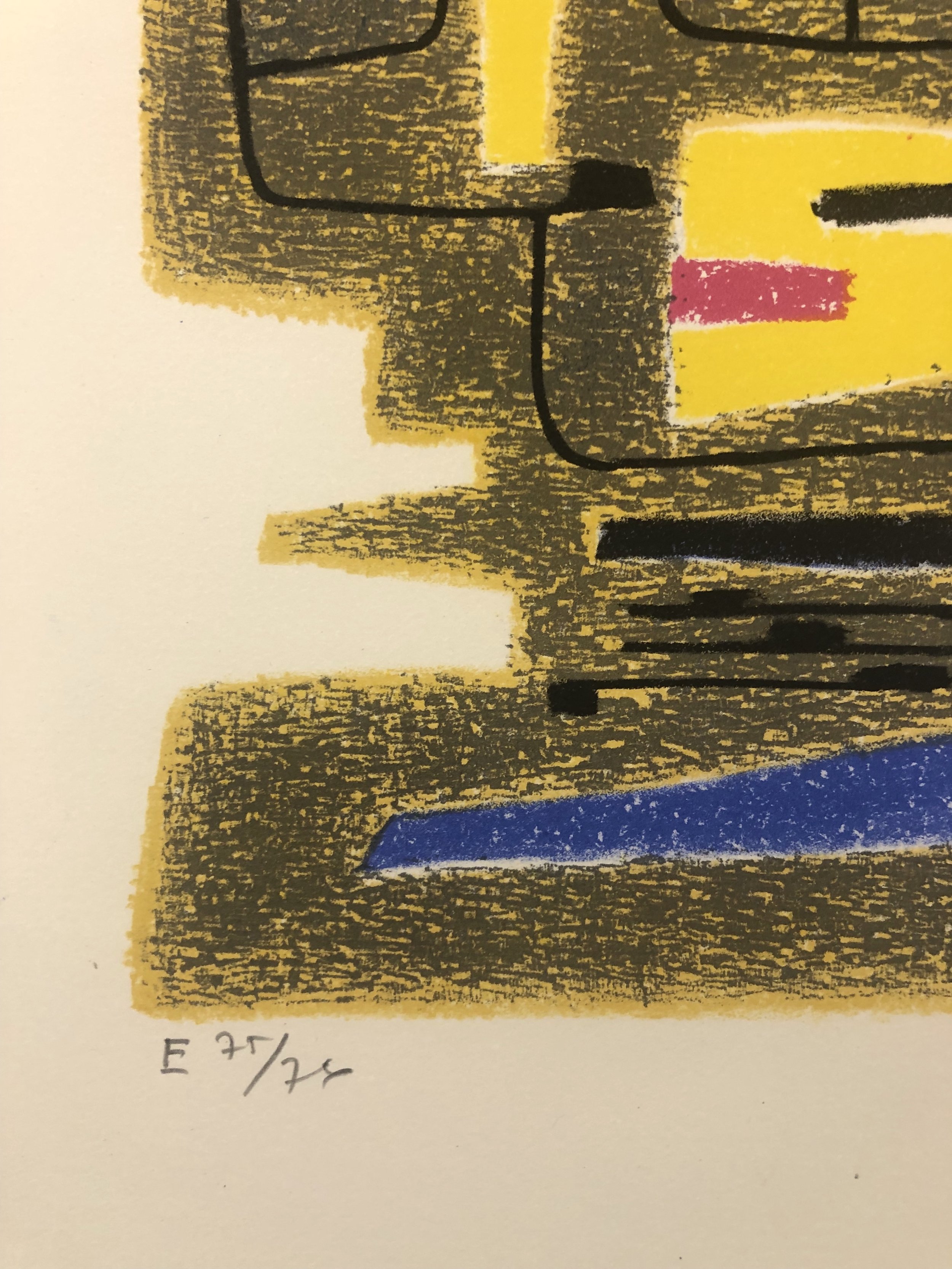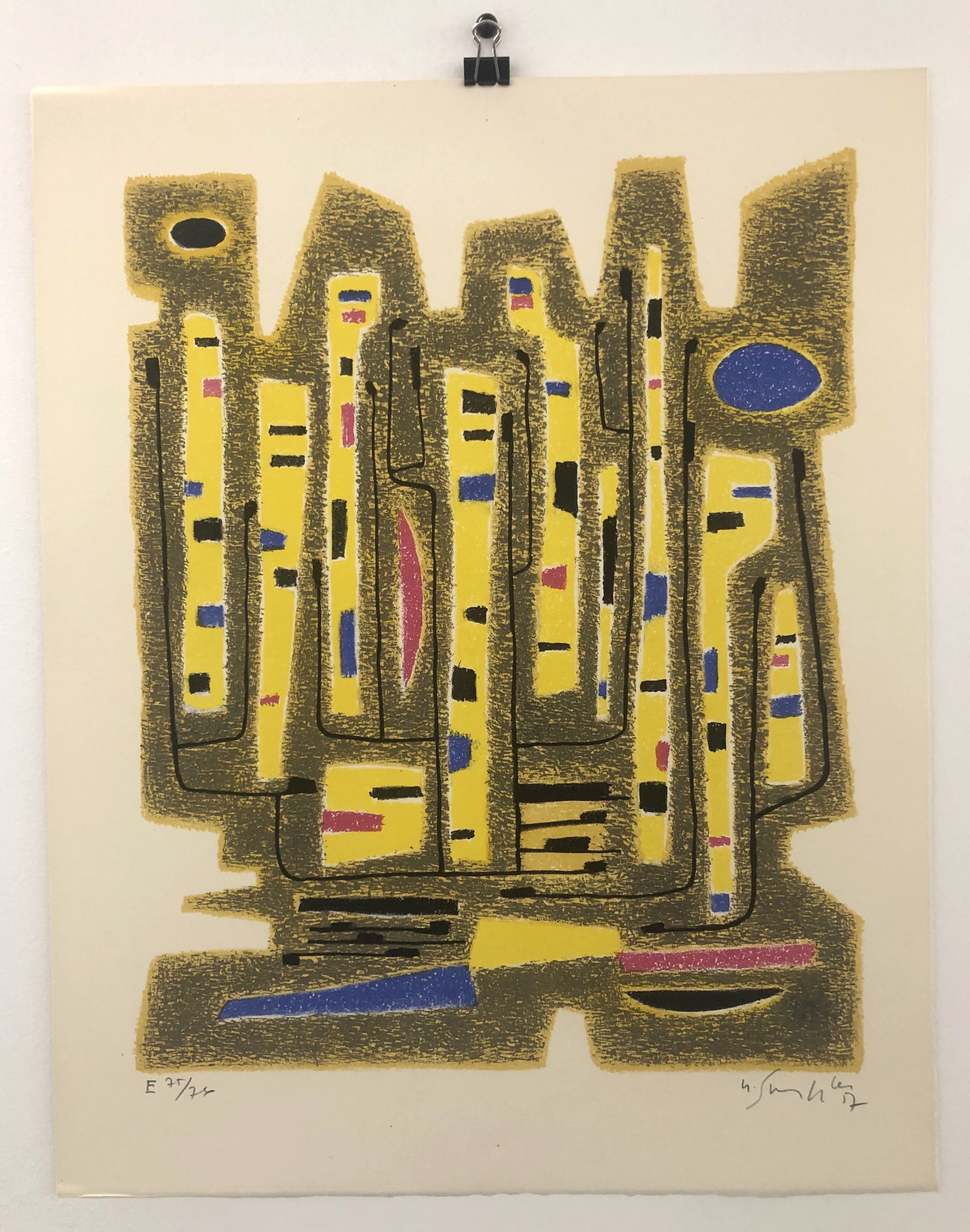Gustave Singier (1909 – 1984) was a Belgian non-figurative painter active in France as part of the new Paris School of Lyrical Abstraction and the Salon de Mai.
Singier arrived in Paris in 1919, studying at the Boulle school from 1923 to 1926, and then working from 1927 to 1939 as a draftsman for a shop building company that produced aircrafts during both World Wars. In 1940, Gustave Singier was mobilized into the Belgian Army to fight in World War II, however by 1941 he was employed at his father’s furniture shop where he continued to work until 1944. At that time he took shelter in the house of Alfred Manessier along with other artistic and intellectual friends. He also continued to display his work during the war years in the Salon des Tuileries, the Galerie de France, Paris and the Salon d’Automne. He also exhibited in the first show of avant-garde painting during the occupation of France, the “Twenty Painters in the French Tradition” show at the Galerie Braun organized by Jean Bazine and Andre Lejard.
After Armistice was signed, Gustave Singier returned to Paris. He returned to painting but his paintings began completely abstract, featuring flat patchwork patterns of bright colours. Within a year of the cease-fire, Singier exhibited within the Salon de Mai, a new salon for young independent painters.
In 1951 Singier was made a professor at the Academie Ranson and named Head Professor of the painting department of the Ecole National Superieure des Beaux-Arts - a post he held until 1978. Singier is mainly remembered as a non-figurative painter in watercolour and oil, but he worked in several other types of media including etching and lithography and designed pieces in stained glass and tapestry. Singier’s post-war work was very influential to the Lyrical Abstraction style, popular from 1947 to 1957 and in the 1970’s, when it experienced a revival. Lyrical Abstraction was created in response to (and opposed to) many of the other styles of modern art including the “l’Ecole de Paris”, Cubism and Geometric Abstraction. The term Lyrical Abstraction was coined by Georges Mathieu, when he organised an exhibition entitled “Abstraction Lyrique,” but the style is also sometimes classed “Tachisme”. Major venues for this style include the galleries Arnaud, Drouin, Jeanne Bucher and the Galerie de France, where Singier showed his work many times.
Singier actively exhibited in France and began showing his work internationally with pieces in the Venice Biennial and Guggenheim in 1954, and exhibiting his work as far away as Tokyo and Moscow. He was actively involved in the Salon de Mai for most of his life and remained a member of the Board until the time of his death on May 5, 1984.






